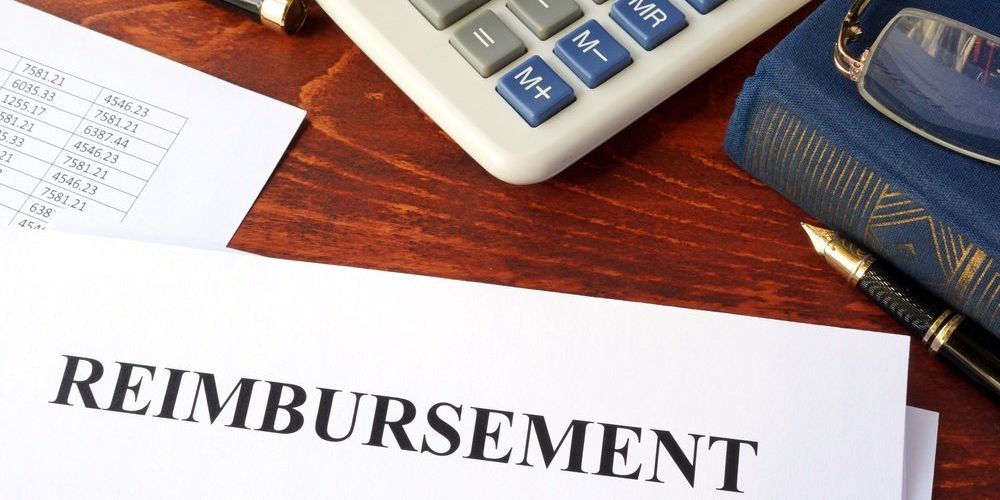For the first time in our nation’s history there is a federal general paid leave act. While, the Family Medical Leave Act (“FMLA”) provides unpaid leave, it is only with the enactment of The Families First Coronavirus Response Act (“Act” or “FFCRA”)), signed March 18, 2020, that there is a requirement if an employee misses work, for certain Coronavirus related issues, he or she will be paid something under certain circumstances. Or at least that applies to some people, the actual percentage of the economy affected by the Act is less than half. The effective dates for the FFCRA are April 1, 2020, to December 31, 2020.
Not everyone is covered by the Act. Only certain federal government workers (but not state or local employees) are covered. The FCCRA also covers some private employees; specifically, those working for employers employing fewer than 500 employees.
The FFCRA has two parts: the Emergency Family Medical Leave Act (“EFMLA”), an extension of the FMLA, which includes Coronavirus as a covered condition; and the Emergency Paid Sick Leave Act (“EPSLA”). Each covers an employee for different absences attributable to Coronavirus.
It is important to understand, that any leave before April 1, 2020, or payments for same, do not count. The FFCRA is effective only for work absences on or after April 1, 2020.Time off, or payments, before April 1, 2020, do not count. Absences that began before April 1, 2020 are not covered after April 1, 2020.
THE EPSLA
EPLSA provides an employee who contracts Coronavirus their salary, or a percentage of their salary, for up to eighty (80) hours over two (2) weeks, for a full-time employee, or the average of what they work in a two week period for a part time employee. The employee must be working for the employer for a minimum of thirty (30) days prior to their absence. There are six (6) qualifying conditions, and the amount of pay due for the two weeks, depends on which qualifying condition justify the leave. The qualifying conditions applicable to the two-week leave are:
- The employee is subject to a federal state or local order to quarantine or isolate, related to COVID-19;
- The employee has been advised by a healthcare provider to self-quarantine due to concerns related to COVID-19;
- The employee is experiencing symptoms of COVID-19 and seeking a medical diagnosis;
- The employee is caring for an individual who is subject to either (1) or (2);
- The employee is caring for a child (under age 18) of the employee, whose school or daycare center is closed, or whose childcare provider is unavailable due to COVID-19 precautions; or
- The employee is experiencing any other substantially similar condition specified by the Secretary of Health and Human Services in consultation with the Secretary of the Treasury and the Secretary of Labor. (Until these agencies provide guidance, no one is quite sure what will constitute a “similar condition”..
An employee who qualifies under Conditions 1, 2, or 3, can receive their full salary up to $500.00 per-day with a $5,000 aggregate limit. For an employee qualifying under Conditions 4, 5, or 6, the employee can recover two-thirds of their regular pay, up to $200.00 per day, with a $2,000.00 aggregate limit.
An employer may not require an employee to use other sick leave the employee has accrued before taking sick leave under EPSLA.
THE EFMLA
The EFMLA modifies the FMLA to make a “public health emergency,” like COVID-19, a qualifying event for the FMLA. As such, the EPSLA deems an employee to be eligible for benefits after only thirty (30) days of employment, not twelve (12) months or 1,200 hours, as otherwise required under the FMLA. . This applies to all government workers (federal, state, and local) but, only to employees of private companies employing five hundred (500) employees or fewer.
EFMLA provides up to twelve (12) weeks leave, ten (10) of which are paid, for a worker who cannot work, or telework because they are caring for a child under the age of 18 whose school or daycare has been closed as a precaution, or other reason related to COVID-19.
Under the EFMLA, the FMLA’s twelve (12) weeks of leave are extended to cover Coronavirus related absences. However, healthcare businesses can opt out of offering this as an option to their “healthcare providers.” Also, first responders may be exempted from the EFMLA’s benefits. It is worth noting that the EFMLA does not provide a definition of who is a “healthcare provider,” or “first responder.”.
Pursuant to the EFMLA the first ten (10) days of leave are not paid, however, the employee may use accrued paid leave. Starting on day eleven of their absence, an employee qualifies for two-thirds of their regular salary, subject to a $200.00 dollar per day cap, and a $10,000.00 aggregate limit.
If the employee was laid off after March 1, 2020 and, then, is reemployed, the employee is qualified for EFMLA without a qualifying period of employment. Also, if prior to March 1, 2020, the employee was employed for thirty (30) of the preceding sixty (60) days, they are qualified to receive EFMLA benefits.
EFMLA requires that the employer restore the employee to the position that the employee occupied before the leave, except in certain circumstances for employers of under 25 employees. There are three (3) circumstances that an employer of under 25 can rely on. :
- The position is eliminated because of hardship due to COVID-19.
- The employer makes a reasonable effort to put the employee in an equivalent position.
- If the employer cannot offer a reasonably equivalent job, the employer must give the employee the first choice of refusal for any equivalent job that the employer creates for a period of one (1) year.
TAX CREDITS
Technically, the government will reimburse an employer dollar for dollar, up to the caps, for any money paid under the Act to employees as paid leave.
Employers need to carefully document everything because the exact way that tax credits will work remains unknown until guidance is provided by the Department of Labor and/or Internal Revenue Service. Employers are, hypothetically eligible for a tax credit to cover the leave with limits of two-hundred dollars ($200.00) per-day for the EFMLA and five-hundred dollars ($500.00) per-day for the EPSLA. Tax credits are supposed to be day-for-day reimbursements. So, businesses that are included within the scope of these statutes should keep detailed records, as it seems likely an employer may have to prove their employee qualified, and the exact amount paid.
In theory, the employer may retain the federal payroll taxes it would normally pay the government, to make up for the amounts it pays employees under FFCRA. However, there are more taxes that may be withheld, such as employees’ Social Security and Medicare taxes, the employee and employer portions, and federal income tax may be withheld as well. If the employer’s payroll tax savings are not enough to cover the cost of the employees to whom the employer paid leave for qualified sick and childcare leave, the employer can apply to the IRS, for an IRS expedited payment, which is supposed to be processed within two weeks.
The employer does not have to pay the Social Security Payroll Tax for the paid time off under the Act, however, the employee is responsible for his/her half of the Social Security Payroll Tax for that paid time off.
WORKERS’ COMPENSATION FOR CORONAVIRUS
Actions for workers’ compensation are, no doubt, about to flood employers. However, for an employee to claim workers compensation entitlement based on COVID-19 they will need to show he/she contracted the disease while furthering the employer’s interests, meaning while working. This will, likely, need to be established by expert testimony, in order to trace the Coronavirus back to the workplace. While many employees may not be eligible to recover on a claim of Workers’ Compensation, there are exceptions, workers who are likely to recover workers. The exception to this is workers in medical facilities, police, firefighters, and paramedics, who are likely to be eligible for Workers’ Compensation
The key is that eligibility will be an industry by industry evaluation, and, also, depend on the non-work environment of the employee. Hence, each case will be dealt with based on its own facts, however, someone working in the healthcare industry, will be assumed to be likely to have caught Coronavirus from work, and so will police officers, paramedics, and fire fighters.
KEY FACTS AND ADVICE FOR EMPLOYERS AND EMPLOYEES ABOUT THE FFCRA
- Document, document, document. The single most important thing an employer can do to have a program in place is to keep accurate and complete records, and maintain timely and accurate l documentation of the exact type of leave the employee is taking and his/her justification for same. An employer may inquire as to an employee’s qualifying condition and require that employee to provide documentation from a physician or other qualified health care professional. Without this documentation an employer cannot maintain accurate and complete and accurate records for the purposes discussed above t. Once an employee is on leave, the employer needs to keep complete and accurate records of what the employer is paying the employee. From the employee’s perspective, the most important thing is to submit a written request for the specific amount of time off, with supporting justification, in writing, from their employer.
- As previously noted, healthcare providers and also emergency responders may be exempt from the FFCRA. An employer may exempt first responders and healthcare providers from receiving FFCRA paid leave benefits. However, the definition of a “healthcare provider” and “emergency responder” have not yet been defined by the Department of Labor (“DOL”) . This federal department has sole authority under the Act to define these terms. Until the DOL defines the terms, is appears reasonable to assume that the receptionist at the doctor’s office is not a healthcare provider; also, a scheduler or billing coder is unlikely to be a healthcare provider. In contrast, doctors, nurses, police officers, firefighters and paramedics likely are exempt from receiving paid leave benefits, if their employer choses. Employers need to proceed with caution until the DOL defines these terms. An employer who is not sure how to proceed should contact their legal counsel for guidance.
- Yes, an employer can ask for a doctor’s documentation that an employee has Coronavirus, is caring for someone with COVID 19, is experiencing symptoms of COVID 19, or has been advised by a doctor to self-quarantine, in conjunction with granting paid leave under EPSL. Employers, even a health care entity in its role as an employer, are not covered entities or business associates under HIPAA-HITECH, the federal scheme for protecting patients’ health information. However, in most states (including Florida) an employer has a legal obligation to maintain the confidentiality and security of the health information they collect from their employees.
- If possible, employers should avoid laying employees off. If it cannot be avoided, an employer should work with their legal counsel to develop a strategy that minimizes the possibility of future liability for the employer.
- Is there is a hardship exemption? The Act includes a hardship exemption for business with 50 or fewer employees, to providing child-care related leave. However, as with everything else associated with the Act, guidance from the Department of Labor is necessary to understand what this will mean. In the interim, an employer seeking to take advantage of this provision must document, in every conceivable way, that not providing child-care related leave would jeopardize the viability of its business.
- What type of notice should employers give their employees about Coronavirus Leave?The DOL has created a poster for employers to hang. However, given the number of employees who are teleworking, employers should consider e-mailing the poster to all of those who are teleworking, in addition to hanging it in an area where employees can see. The poster can be found at either
- https://www.dol.gov/sites/dolgov/files/WHD/posters/FFCRA_Poster_WH1422_Non-Federal.pdf
- https://www.dol.gov/sites/dolgov/files/WHD/posters/FFCRA_Poster_WH1422_Federal.pdf.
- The Act reflects the federal government’s recognition that COVID-19 has created a unique set of challenges. As with any new law, particularly one as far reaching as the Act, there are many questions that cannot be answered at this time. Unfortunately, that does not mean employers can ignore its provisions and wait until guidance is provided- they need to begin acting now. The best course of action for an employer, therefore, appears to be to work closely with qualified legal counsel in order to demonstrate the intention to satisfy these requirements, even if later guidance does not support those actions.



